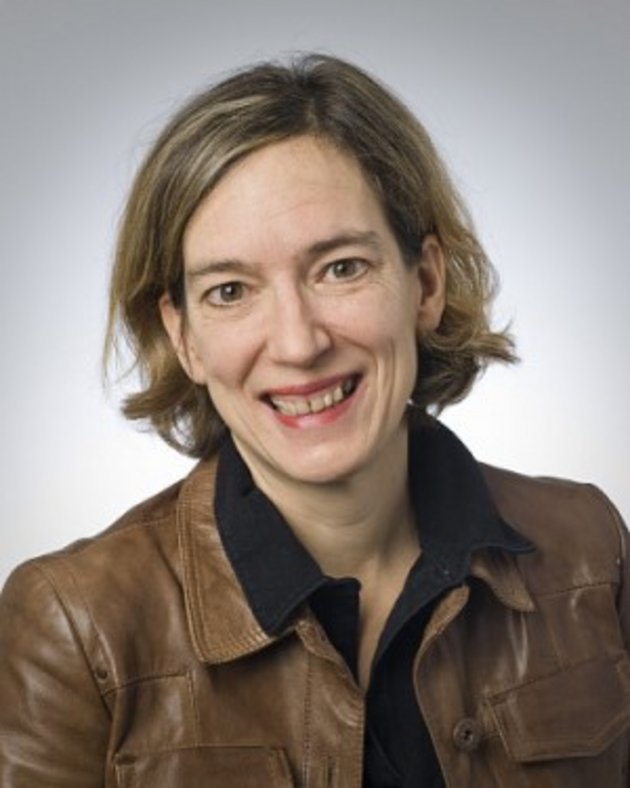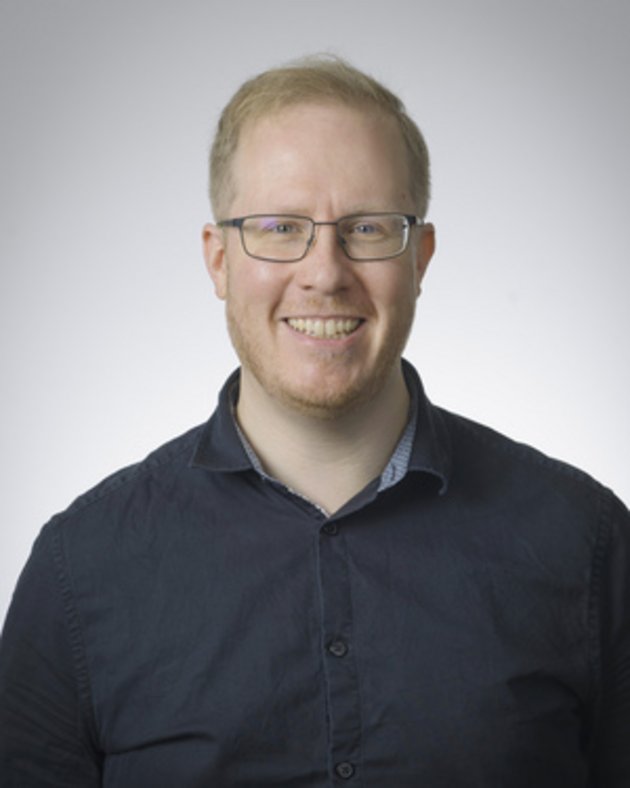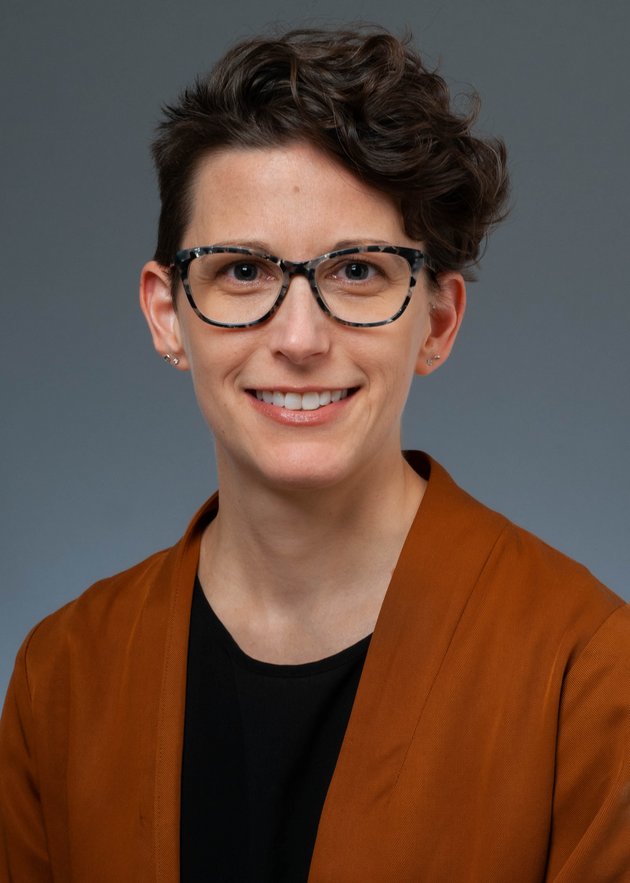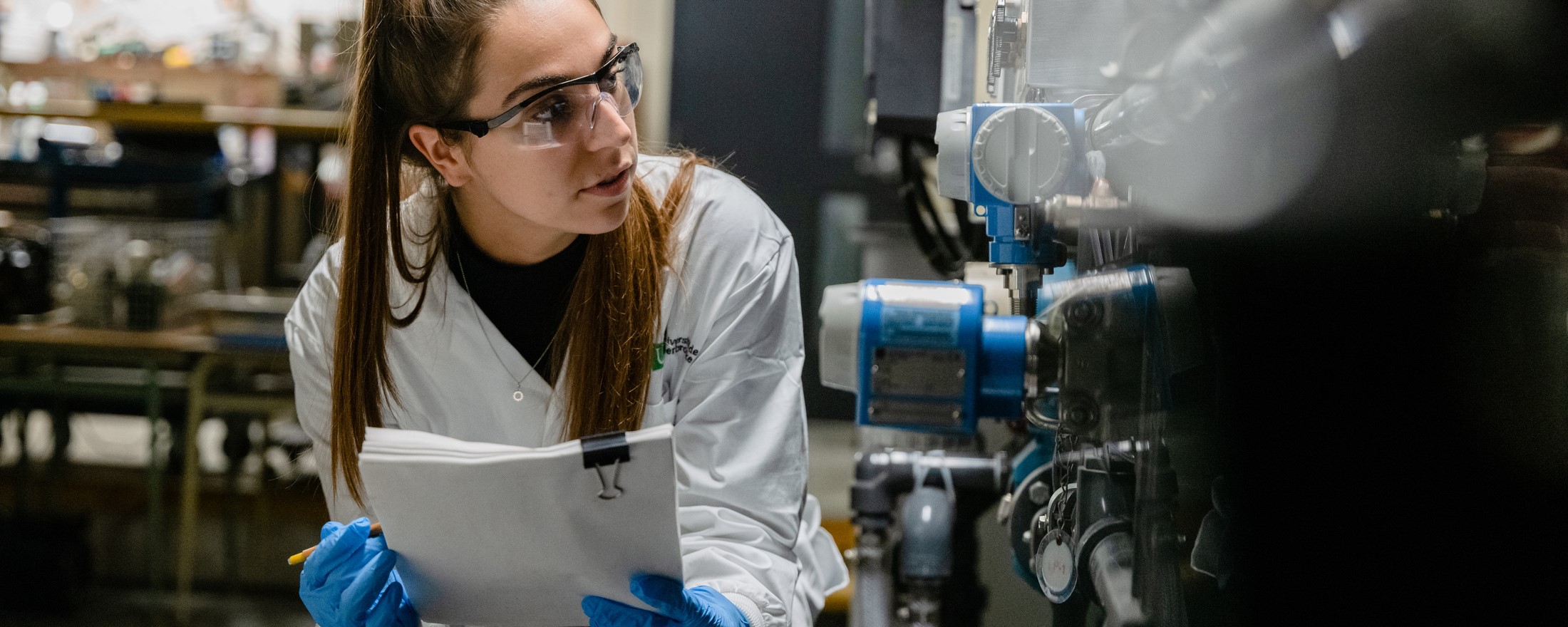Têtes chercheuses
The Université de Sherbrooke (UdeS) continues its ascension among the most prolific Canadian universities, thanks in large part to its committed research community.
Its teams are at the heart of many remarkable advances that are helping overcome challenges facing the world.
With Têtes chercheuses, we are opening an exclusive window into the innovative achievements of the UdeS’s researchers!
Fall 2022 edition
Learning to live together through culture

Based on the analysis of literary texts in the past 30 years, Professor Isabelle Boisclair leads the project, Le(s) lieu(x) du pouvoir : analyse intersectionnelle des subjectivités de sexe-genre-désir dans leur rapport avec l’espace dans la littérature francophone contemporaine (places of power: intersectional analysis of sex-gender-desire subjectivities in relation to the space in contemporary French-speaking literature), with her colleagues Nicole Coté (UdeS) and Lori Saint-Martin (UQAM), aiming to determine where power lies and with whom through the analysis of sexual scenes and relationships in novels, taking into account sex, gender, desire, and factors that affect the distribution of power such as social class, belonging to a racialized group, and age.
Books: Carriers of change
By studying the cultural evolution of society, this project contributes through the discovery of new ways of thinking about romantic relationships and the means of expressing them, which have an effect on our behaviours and actions.
Redefining power and recognizing diversity
This study contributes to better understanding power issues in terms of social gender relations and forms of sexuality, while responding to a challenge in the recognition of all genders.
The expansion of feminism
Women are increasingly claiming the right to have pleasure and the power to participate in decisions about where and when sexual relations will happen (which has not always been the case, e.g. conjugal duty). Women are no longer only objects of desire, they are also the subjects. In a heterosexual context, men are the objects of their desire. This turning of tables does not necessarily or directly lead to a reversal of powers, but rather to reciprocity, a more equitable sharing of power with regard to sexuality.
Greater visibility of sexual identities
Another issue addressed by this project is the recognition of all genders and what this means in relation to literary works. The battle for visibility, social recognition, and legitimacy for all sexual identities is far from over, although there has been progress and an increase in the number of women authors and authors from sexual minorities writing about their experiences.
Highlighting major social transformation
This research has demonstrated a clear evolution in literary works, which depict many gender identities and types of romantic and sexual relationships. Social transformation has happened.
In particular, this study has demonstrated that people from sexual minorities have gained legitimacy and their perspectives are calling into question the distribution of power. Many of them write to not only denounce the violence of which they have been victim, but also to present their version of events. The novel Le consentement by Vanessa Springora is an example, but there are many others.
Reading between the lines
“The magnitude that literary texts reveal about ourselves is what fascinates me, especially on a collective level, what they reveal of our humanity, society, our ways of living and how we live together. Literary work is a privileged place to denounce methods that appear unacceptable to us and to envision other types of relationships.
I know it may seem a question of “morality” (denouncing methods that appear unacceptable to us), but it is rather in terms of the political-imaginary plane on which it rests: It is not a moral discourse. Moreover, the reflection that such works engage is more of an ethical nature than moral. The reflection promotes awareness concerning the distribution of power, so we can establish a more equitable distribution of power among people,” explained Professor Boisclair.
In this regard, she hopes to convey three key concepts to her students:
- Learning to read: A novel is much more than what’s being “told”.
- The ability to grasp everything symbolized in a literary text.
- Intellectual stimulation and the pleasure of analysis. Enjoying the process of understanding, foreseeing, thinking, envisioning, and reflecting.
Proving the existence of a liquid, which isn’t a liquid

Theoretically predicted in the early 70s, spin liquid is not a liquid in the usual sense, like a solid or gas. It is actually another state of matter which is the focus of the work of Professor Jeffrey Quilliam, who hopes to deepen knowledge on the subject through his project Découvrir et comprendre le liquide de spin quantique (discovering and understanding quantum spin liquid).
Deciphering the universe through quantum science
Based on the study of the physical properties of new materials, this fundamental research project aims to better understand how the universe works by examining the mechanics of a large number of quantum objects.
Frustrating magnets to create a new state
The physical phenomenon that makes your magnet stick to your refrigerator is quite simple. This type of “conventional” magnet, also called a ferromagnetic magnet, contains electrons (particles with a negative electric charge). Every electron has a small magnetic field called a spin and each spin in the material is aligned in the same direction.
Energy is lower when the spins are aligned in the same direction (↑ ↑) and higher when the spins are not in alignment or anti-aligned (↑ ↓).
By studying such conventional materials at very low temperatures, the spins have been observed as wanting to adopt a phase (configuration) that makes all of the spins point in the same direction. This configuration generates a large magnetic field around the spins which is what allows you to use such magnets to hold messages against your refrigerator. Professor Quilliam’s project focuses on a much more complex type of magnet: frustrated magnets.
What does “frustrated” mean when talking about magnets? As an example, take a configuration of triangles with three spins at an equal distance. If there are interactions between the spins that want to force them into anti-alignment, then there is a problem. There will be two spins in anti-alignment, but the third spin will remain uncertain of which direction to take. This spin is then referred to as “frustrated.” This is the foundation of magnetic frustration. Using magnetic frustration, Professor Quilliam can produce much more complex configurations. Even at very low temperatures, the system does not know which configuration to take to minimize its energy.
Again, although more complex, they remain “classic” systems. They are well-defined objects that have spins with one possible orientation at a time. Quantum mechanics allows for a superposition of states, thus making it possible to have multiple spin configurations at the same time. As a result of this complex configuration of a superposition of spins, it is possible to achieve other states or phases of matter which can thus better minimize the system’s energy in comparison to conventional systems. One of these complex phases is referred to as the spin liquid.
In quantum sciences, analogies are commonly used to express a concept or phenomenon, as is the case for the spin liquid. It is not a liquid form as you know it, but rather a type of magnet or magnetic system that has unique properties. Imagine that the spins are fluctuating, like a liquid does. This allows you to see spins like water molecules that move in all directions.
Although this concept has existed in the minds of theorists for 40 or 50 years, only in the last 20 years have physicists begun to find materials that can allow this phase to be produced at low temperatures. One objective of Professor Quilliam is to find new materials and techniques to attempt to measure and understand these phases, which were until recently unknown. In collaboration with the physicists and chemists who manufacture new materials, he can examine the measurement, characterization, and understanding of the magnetic properties of these new materials.
Provoking discoveries to enrich knowledge
Professor Quilliam has already made major discoveries since beginning this project. By successfully establishing that these phenomena are more common than we thought and that several different methods can induce such states, he has demonstrated that there is more diversity in this field.
In addition, he recently discovered different configurations that allow for creating quantum spin liquids of different types, as well as developing new techniques to explore the properties of the new materials. There is great potential for this research project and all of the potential applications such knowledge could lead to!
Accessing several universes through quantum materials
When he was a student, Professor Quilliam developed a passion for the beauty of nature, the universe and the laws explaining how it works. This is what he wants to convey in turn to people considering a career in physics, more specifically in quantum physics.
“Studying quantum materials, and that includes magnetic materials, is really a way to access this beauty of physics through alternative means. Conducting particle physics is also great but you have just one universe to work with, while a student working in quantum materials has access to several universes in a single thesis, as each material is its own universe with its own properties, its own physics, and its own beauty in fact. It’s a really great way to study physics and to observe the complexity and elegance of this subject,” he highlighted.
Humanizing urban change

The Impacts de la revitalisation du centre-ville de Sherbrooke (Qc) sur l’équité en matière de santé chez les jeunes adultes (impacts of the revitalization of downtown Sherbrooke, Quebec, on health equity among young adults) project by Professor Martine Shareck aims to assess the positive and negative impacts that changes will have in the urban and social environment as part of downtown Sherbrooke’s revitalization.
Highlighting inequalities
This project will help better understand the impact of major urban development projects on health, but also on the social inequalities in health, which have been less studied, especially for young adults.
Addressing three social issues in one project
- Cities invest a lot of money (mainly public funds) in improving the vitality and economic prosperity of neighbourhoods, including city centres. While these investments have positive impacts, they can also have negative impacts, including the displacement of more marginalized populations which is an issue rarely evaluated in this type of project.
- City size: Most studies are primarily conducted in large cities and the results cannot necessarily be generalized to smaller cities such as Sherbrooke, since our ways of interacting with the environment and the transportation means used also differ.
- Young adults (16 to 30 years old) are often not included in decision-making at the local level and are not always considered a population of interest by public health. Yet this is a pivotal period for the promotion of health and the prevention of social inequalities in health.
Pursuing research to serve the population
Although the project is underway and full analysis of the data has yet to be completed, Professor Shareck has determined that the feeling of safety is a very important issue in Sherbrooke and downtown, particularly for women. Moreover, public spaces which were to be temporary became established, since the population used and enjoyed them, and they seem to have met a need.
At the end of this project, Professor Shareck will be able to provide a full profile of the situation to the various municipal and community organizations as well as to other cities that are planning urban changes.
Going beyond the superficial
Professor Shareck wants to provide an alternative perspective to research among the students she teaches. “I encourage them to always look for a better understanding, an in-depth understanding of what they are observing, without stopping at the surface. I encourage them to dig even deeper and to take a critical look. Whether in relation to literature, their research projects, the world we are observing, because that is how we see things in new perspectives and have more practical research that will serve beyond the academic environment and the scientific literature,” she explained.
